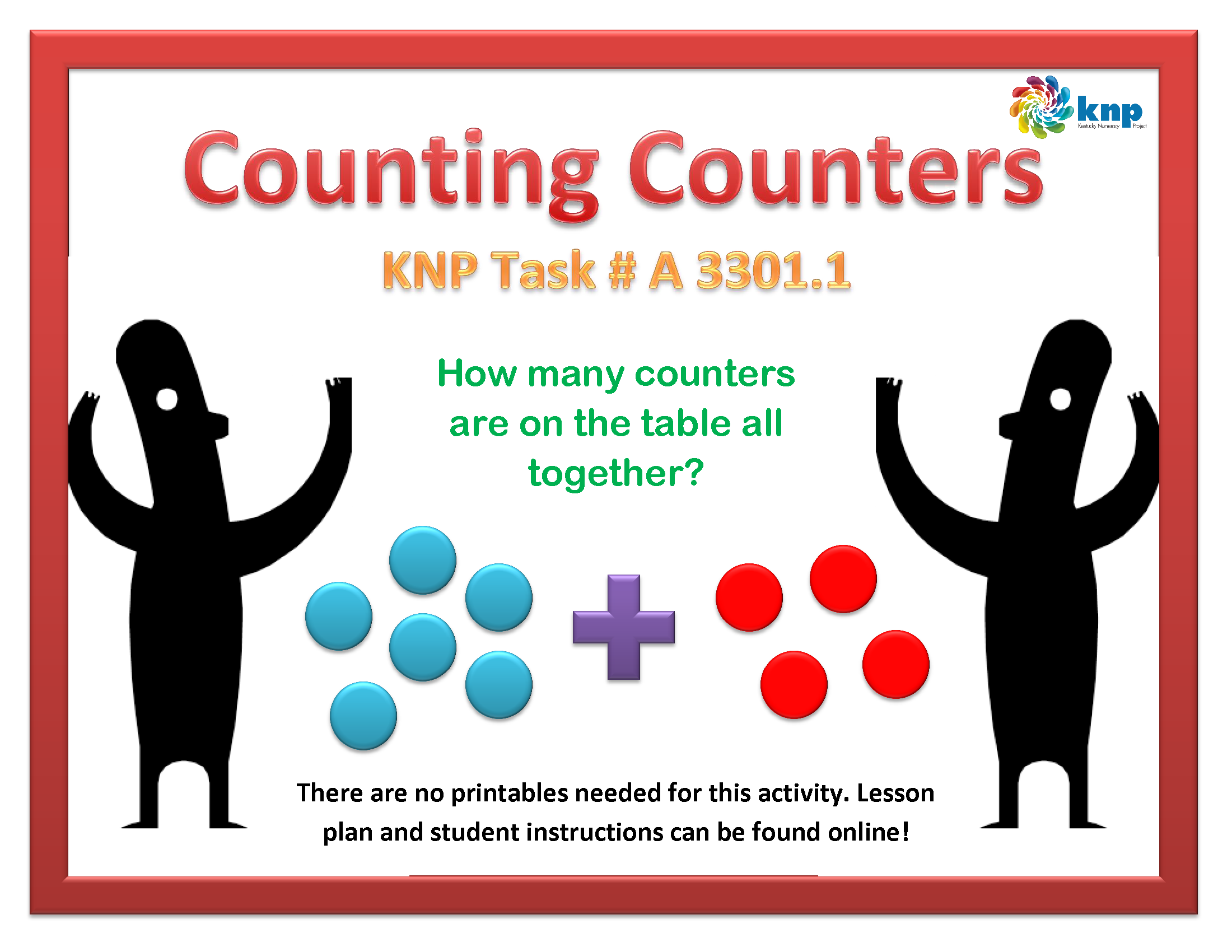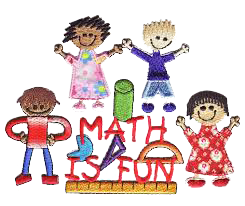“Counting Counters (to 20)”
KNPIG ID #A 3301.1
What's this activity about?
Using anything from around the house, your child will work to tell the total of two groups of items (within 20). This activity helps build familiarity and efficiency with addition within 20.
What materials do we need?
20 of any type of counter: pennies, bingo markers, oyster crackers, dry beans, etc.

How do we play?
Randomly arrange any amount of one counter on a flat surface and another amount of the other counter. (ex. seven pennies and four dimes) have your child count how many items there are altogether.
Where’s the Math?
There is a lot of math in this game that goes along with what your child is learning in school. Your child is learning how to combine groups of items to come up with a total. He/she is also learning how to remember and use different methods when those items are shown, and then covered. This encourages his/her to begin to use mental strategies to fluently add and subtract and move from counting from one, to working with totals to make new totals.
Things to Think About:
As always when working with children, be patient. Your child will typically count one by one at this stage but will develop more efficient strategies as he/she practices with this activity. Try to notice how he/she is counting: using his/her fingers, head nodding or tapping. Ask your child how she is coming up with answers. Having him/her discuss and think about how they work through problems will help them find his/her mistakes and build on his/her strengths. If he/she understands what method works for them, it will help him/her also become faster and more confident in his/her answers.
This game is a great way to relate math to real life. Your child is learning now how math will show up in his/her everyday life. Make the connections while they are young and it will be easier for them to see it when working with more difficult math concepts. Ask your child about combing different objects into groups. Count two types of fruit separately and then together, or count the number of cars and trucks separately and all together at a stop light. Making math relatable makes it more interesting and fun for kids.
Feedback
Send us your thoughts and ideas about these activities. Email the KCM

